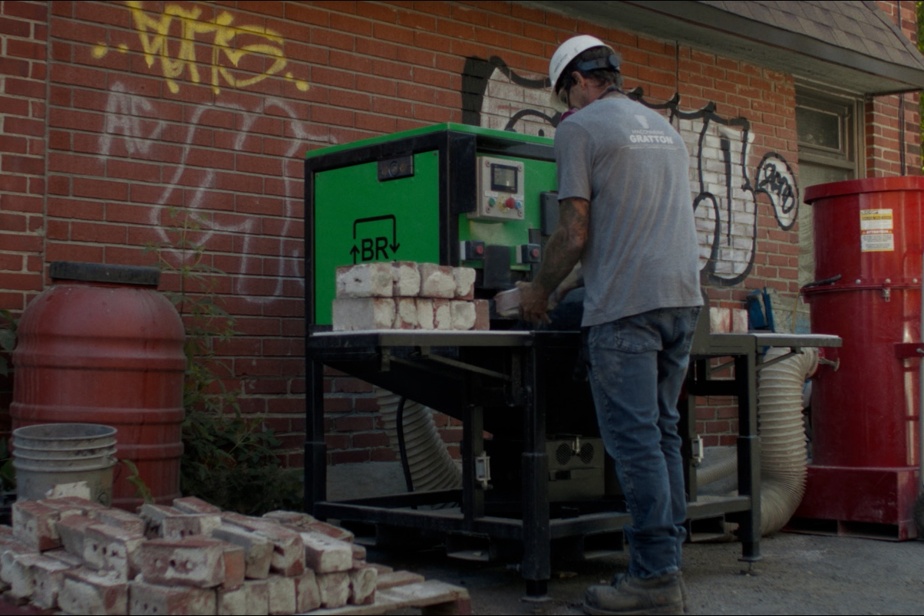The environment is at the heart of two documentary projects which will be broadcast in the run-up to Earth Day, April 22. Series Emergency climate documents the ravages of climate change, while the film Going green: the rules of the game focuses on innovative ideas that are too often hampered by lack of funding and short-sighted bureaucracy.
Since it is easier, faster and more economical to rebuild from scratch than to dismantle and rebuild, our landfills are full of construction waste. Among other things, perfectly reusable bricks. “It’s a disaster,” says Tommy Bouillon, president of Maçonnerie Gratton, in the documentary Going green: the rules of the game hosted by Catherine Perrin.
Since the environmental footprint of manufacturing new bricks is enormous, he found it ridiculous that a brick removed from a wall would not be reused. He invented a machine with a laser-guided blade that can remove residual mortar, clean the bricks and reinstall them. Directly on the construction site.

PHOTO PHILIPPE BOIVIN, LA PRESSE ARCHIVES
Catherine Perrin anime Going green: the rules of the game.
Recycling a 1000 square foot section of brick wall avoids the emission of nearly 6 tonnes of greenhouse gases, “approximately my annual footprint”, illustrates Catherine Perrin. However, due to bureaucratic roadblocks, Tommy Bouillon had to go back to the Minister of Labor so that his Brique recycle technology could be used on construction sites in Quebec.
This example is just one of the obstacles faced by local companies developing materials that are less harmful to the environment or innovative technologies for decontaminating water. In less than an hour, Going green shows that good ideas often come up against a lack of financial investment, the reluctance of the rare institutions that dare to finance innovation and short-sighted regulations that prefer the status quo to an idea that does not “fit into the little boxes.”
No time to waste
Meanwhile, on the other side of the world, in Bangladesh, it is no longer time to wonder whether this or that idea corresponds to the criteria for a call for tenders, we must act. Millions of people live in areas threatened by rising waters and finding innovative solutions for fishing, housing and agriculture is a question of life and death.
Vincent Graton, host of the series Emergency climateis stunned when he meets villagers who tell him that year after year, they have chest-deep water in their homes.
He also takes the blow when women tell him that the increasing frequency of cyclones in this country bordered by the Bay of Bengal is pushing families to marry off their 12 or 13 year old daughters in the hope that they will have a better life far away. flood-prone areas.
These dramas are only a preview of the worrying observations he will make in the series Emergency climate, for which he went to different corners of the world to see and show the already concrete impacts of climate change. It is a very direct reminder of environmental attacks and their consequences on populations who, in Bangladesh, are reduced to crowding into miserable shanty towns or, in Senegal, see the ocean eating away at the coastline and threatening entire villages. .
The subtext of Going green and of Emergency climate is the same: humanity no longer has time to lose if it wants to limit the damage caused by industrialization and mass consumption. Entrepreneur Francis Allard, CEO of RAMO seen in Going greenputs it another way: the bold investments we refuse to make today, our children will pay the price – and much more – in the future.
Going green: the rules of the gameon ICI RDI, Thursday, at 8 p.m.
Emergency climateon TV5Unis.ca starting April 22, then Tuesdays at 7 p.m. starting April 23
